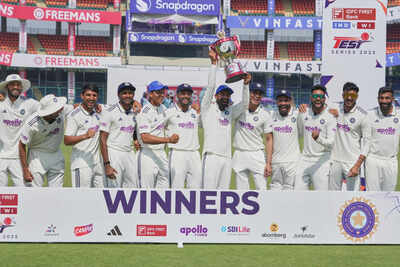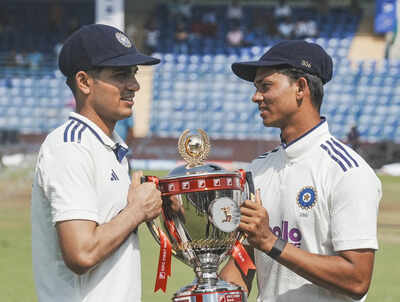Two-Tier WTC: One-sided-series-later, can promotion and relegation save the traditional format? | Cricket News
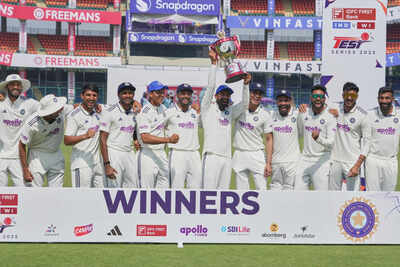
NEW DELHI: Earlier this year, former India head coach Ravi Shastri had advocated for a two-tier structure in Tests with relegation and promotion to ensure the survival of the longest format of the game.“If you don’t create a two-tier system, you’ll continue to have unmatched teams up against each other and then it’s very unlikely they’ll be able to take a game into the fifth day,” Shastri wrote in a column for The Australian.
Shastri’s promotion-relegation talk almost looked a must after the Ahmedabad Test between India and West Indies ended in two and a half days. However, after heavy criticism with former West Indies legend asking Roston Chase‘s side to show some heart, and they did played with grit in the national capital as the second Test went into Day 5. But still it was a comfortable seven-wicket win for India.
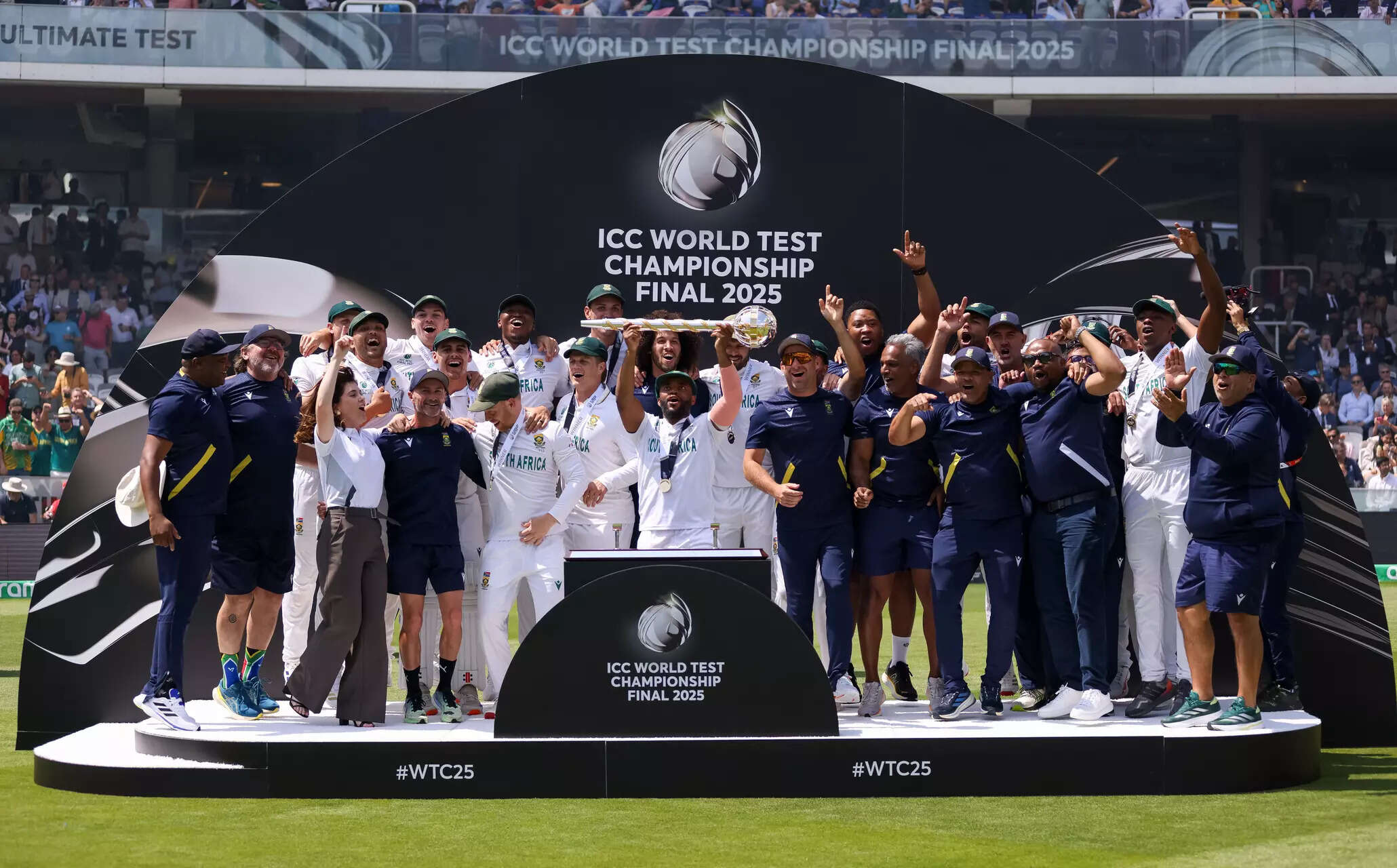
LONDON, ENGLAND – JUNE 14:Temba Bavuma of South Africa celebrates with the trophy during day 4 of the ICC World Test Championship, final match between South Africa and Australia at Lords Cricket Ground on June 14, 2025 in London, England. (Photo by Paul Harding/Gallo Images/Getty Images)
A series, where West Indies never looked ahead in the Test and won one session in total will again raise the familiar questions: how do you make Test cricket meaningful, competitive, and financially sustainable, all at the same time?The question that has resurfaced in the recent times whether it’s finally time to introduce a two-tier system in Test cricket. For those unaware, the idea is not new. First put forward in 2009 by Dave Richardson, the then ICC’s general manager for cricket, it envisages a system where the Test-playing teams would be divided into two divisions:🔴Ensure top teams play more against each other, and consequently🔴Bring greater contest and competition into Test matches, which will lead to🔴 Greater revenue and eyeballs for the game, and make it more market-friendlyAlso read: Two-tier system: Cricket faces its latest test
Context and contest
After 15 years of backdoor work, the World Test Championship (WTC) came into being in 2019, with the motive to add more context to bilateral Tests. By creating a dedicated Test cricket competition and ensuring a pinnacle event for the format.The ICC has been successful to some extent towards the goal, as even if a Test match is a ‘dead rubber’ in terms of the series it is a part of, it carries significance in terms of the points it has on offer.The WTC did added context to bilateral Tests, and gave teams a table to climb, and points to chase, what it has not fixed is the problem of one-sided contests, as so many Test matches — outside of the Big Three, New Zealand (the inaugural WTC winners) and South Africa (the reigning champions) — have been ending in two to three days, and without any competitiveness. This persistent imbalance has renewed calls for structural changes, such as a tiered system, to make matches more evenly contested.
| Teams | Matches | Won | Lost | Tied | Drawn | Deduction | PT | PCT |
|---|---|---|---|---|---|---|---|---|
| Australia | 3 | 3 | 0 | 0 | 0 | 0 | 36 | 100.00 |
| Sri Lanka | 2 | 1 | 0 | 0 | 1 | 0 | 16 | 66.67 |
| India | 7 | 4 | 2 | 0 | 1 | 0 | 52 | 61.90 |
| England | 5 | 2 | 2 | 0 | 1 | 2 | 26 | 43.33 |
| Bangladesh | 2 | 0 | 1 | 0 | 1 | 0 | 4 | 16.67 |
| West Indies | 5 | 0 | 5 | 0 | 0 | 0 | 0 | 0.00 |
| New Zealand | 0 | 0 | 0 | 0 | 0 | 0 | 0 | 0.00 |
| Pakistan | 0 | 0 | 0 | 0 | 0 | 0 | 0 | 0.00 |
| South Africa | 0 | 0 | 0 | 0 | 0 | 0 | 0 | 0.00 |
Also read: ECB reluctant on two-tier Test model, worried over losing marquee clashes
How to make the tier system work
An informal tier system already exists, as we have nine teams that take part in WTC and the three that do not. However, as per the reports, under the proposed tiered system, teams would be split into two divisions, with a system of promotion and relegation.Cricket analyst and writer Jarrod Kimber once advocated for the idea of giving Test status to more countries. While Kimber suggested expanding the Test teams to around 20, a more realistic step could be giving Test status to at least two more teams before the tier system becomes a reality.
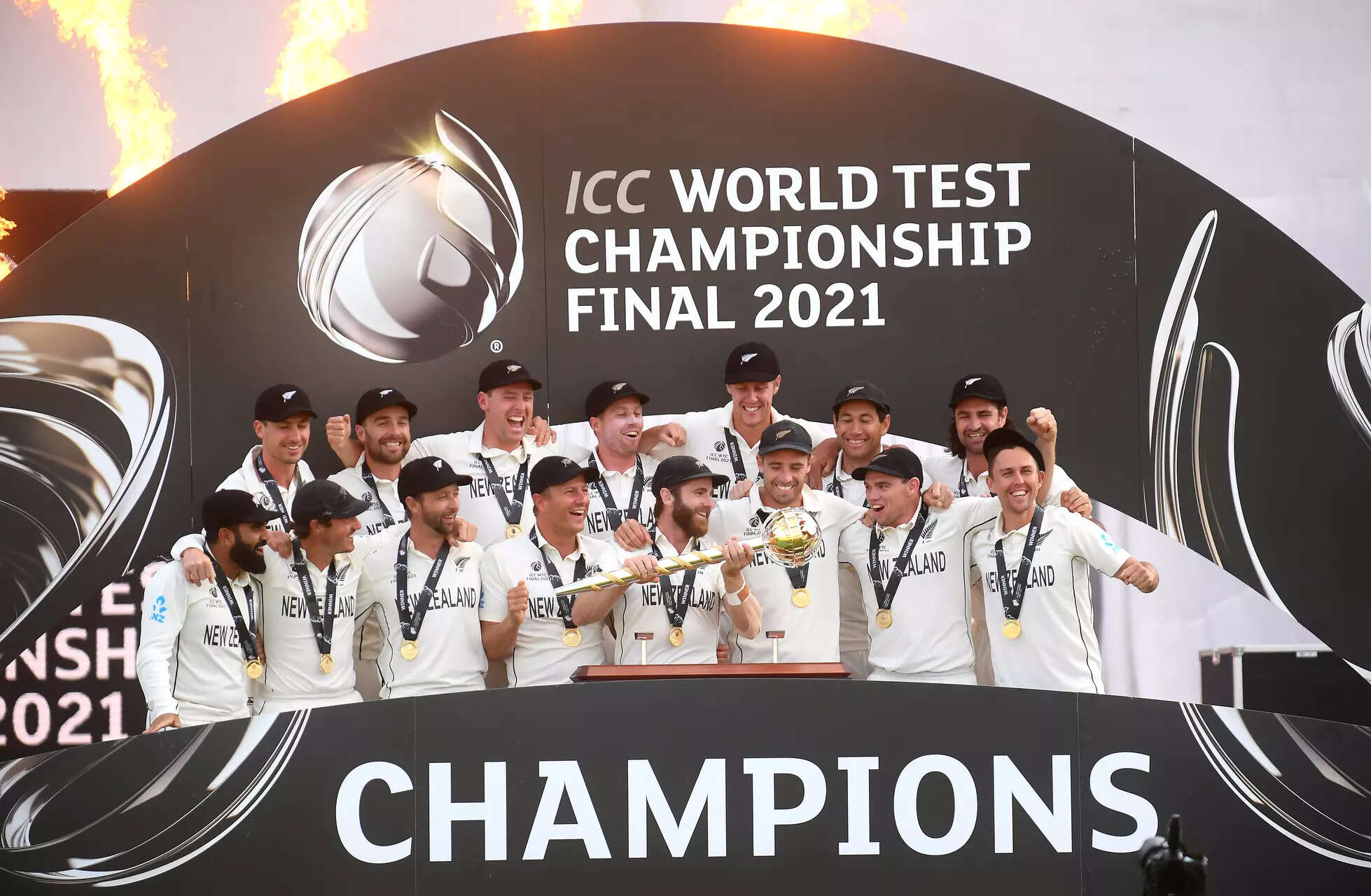
SOUTHAMPTON, ENGLAND – JUNE 23: Kane Williamson of New Zealand lifts the ICC World Test Championship Mace with teammates after victory in the Reserve Day of the ICC World Test Championship Final between India and New Zealand at The Hampshire Bowl on June 23, 2021 in Southampton, England. (Photo by Alex Davidson/Getty Images)
Then, Test cricket will have 14 Test teams and two tiers of seven each, and a system of promotion and relegation. Every team in the top tier plays the other 6 in the WTC cycle, three home and three away series, with not too big a gap in the number of total matches for every team. The other thing to be ensured is that teams in tier two also play regular Tests among themselves. There is a far greater chance for Ireland, Afghanistan, or any other team that would end up in tier two to improve the game by playing more Tests than playing a one-off Test against a top-tier team and getting thrashed away. Afghanistan and Ireland both got the Test status in 2018, and in the eight years since then, they have played just 11 and 10 Tests, respectively.
Sharing the cricket pie, designated windows for Tests, and minimum wage
For many teams outside of the Big Three, playing a Test match is a loss-making thing. For example, talking to the BBC, former West Indies chief executive Johnny Grave said earlier this year, “I found it frustrating when we would come to England at a cost of $1m to Cricket West Indies and see no revenue.” So there’s a major concern around how ICC will take care of the finances of teams who would end up in tier 2.
Poll
What is the biggest factor affecting the competitiveness of Test matches?
Talking to Timesofindia.com, journalist and author Tim Wigmore said that to make the tier system work, “The absolute key thing is that revenue is divided more equally.” Wigmore, who has authored the book ‘Test Cricket: A History’, suggested two ways to tackle the problem.🔴 By introducing a centralised system where ICC oversees bilateral Tests played under the WTC, much like it does with World Cups, issuing centralised broadcasting rights nation or region-wise. Revenue generated would then be distributed: a portion to the host nation, a chunk to the travelling team, and the rest to the ICC, which would share it among the 6-7 tier 2 teams.🔴 Alternatively, the host nation could manage broadcasting and other logistics, but the revenue from Tests would be divided into three: 45-50% to the host nation, 30-35% to the travelling team, and the remainder to ICC for redistribution among tier two teams.Wigmore also proposed the idea of designated windows for Test matches “without competition from franchise leagues being played at the same time,” to ensure the format gets undivided attention and the best players are available.In addition, Wigmore suggests that the idea of introducing a minimum wage for Test cricketers could be explored, particularly for players from those competing in a potential Division Two, “so players in Division Two are still sufficiently well-paid to keep playing.”But in reality it looks like a far fetched dream and Shastri had rightly highlighted: “The best should play the best for Test cricket to survive.”


